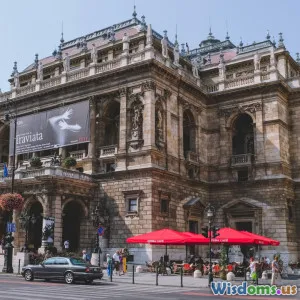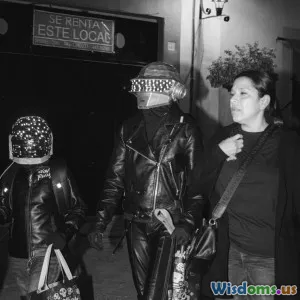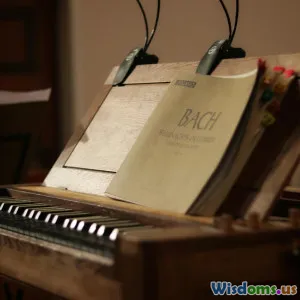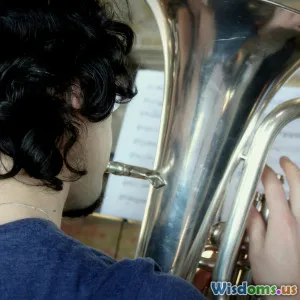
Can Streaming Save Live Opera Performances Today
8 min read Exploring how streaming technology offers a lifeline to live opera during challenging times, revitalizing audiences and the art form worldwide. (0 Reviews)
Can Streaming Save Live Opera Performances Today?
Opera—an art form steeped in tradition, grandeur, and emotional intensity—is facing an existential challenge. Audiences are aging, ticket sales fluctuate, and global disruptions like the COVID-19 pandemic have forced theatres to shutter their doors, threatening the future of live performances. But amidst adversity, one modern savior emerges: streaming technology.
This article dives deeply into how streaming can not only mitigate the immediate crises but potentially usher in a renaissance for live opera, reimagining the art form’s reach and relevance for the 21st century.
The Crisis Confronting Live Opera
Declining Attendance and Aging Demographics
Opera houses globally report decades-long declines in audience numbers. For example, the Metropolitan Opera in New York once regularly filled its 3,800-seat auditorium; in recent years, occupancy rates often fall below 70%, a worrying trend for long-term sustainability. The traditional opera audience is often older—according to a 2018 Opera America survey, over 60% of U.S. opera attendees were 55 or older. This demographic shift poses the challenge of attracting younger, tech-savvy audiences whose entertainment habits vastly differ.
Financial Fragility of Opera Companies
Producing opera is expensive, involving orchestras, chorus, elaborate sets, costumes, and often multinational casts. Ticket revenues generally cover only a portion of costs, necessitating significant fundraising and sponsorship support. Events such as global pandemic closures have devastated the industry financially, jeopardizing employment and production schedules.
Geographic and Social Accessibility Barriers
Opera houses tend to be located in urban centers, limiting access for rural or marginalized communities. Additionally, the genre's perception as elitist or inaccessible has deterred wider engagement from more diverse socioeconomic and cultural groups.
Streaming: A Modern Lifeline for Opera
Breaking Geographical Barriers
By broadcasting performances live or on-demand, opera companies can extend their reach globally. The Metropolitan Opera’s 'Live in HD' series streams performances to over 70 countries, bringing acclaimed productions to cinemas and homes worldwide. This model exploits streaming as a democratizing force, enabling audiences as far away as rural Japan or South Africa to experience world-class opera.
Attracting Younger Audiences Through Digital Platforms
Younger audiences consume content primarily online. Platforms such as YouTube, Facebook, and specialized streaming services like OperaVision offer high-quality opera broadcasts and supplementary content (backstage footage, interviews, educational materials) that resonate with digital natives. The Royal Opera’s partnership with Universal Music Group to livestream select productions underscores the push towards accessible, youth-oriented marketing.
Enhancing Engagement with Interactive Features
Streaming allows integration of interactive elements—real-time subtitles, multi-angle cameras, and audience chat forums—that enhance understanding and enjoyment, especially for newcomers. For instance, Opera Philadelphia’s use of supertitles on screens during streams provides accessibility for non-native speakers and hearing-impaired viewers.
Financial Benefits and New Revenue Streams
While free streaming can challenge ticket revenues, hybrid models combining live attendances and monetized digital experiences are evolving. Some companies adopt pay-per-view or subscription frameworks, like the Royal Opera House’s streaming service, offering an additional income source and increased financial resilience.
Case Studies: Streaming Success Stories
The Metropolitan Opera’s 'Live in HD' Initiative
Since 2006, the Met’s monthly transmissions to cinemas worldwide have attracted millions of viewers, generating tens of millions in revenue outside ticketing. The initiative has revived interest in opera by making it a shared global cultural event, evident in sold-out screenings even during pandemic restrictions.
Staatsoper Berlin’s Digital Pivot During COVID-19
When theatres closed, the Staatsoper offered free and paywalled digital performances, increasing their online footprint and engaging a broader audience internationally. A notable production was Wagner’s 'Ring Cycle,' made accessible with expert commentary, expanding opera scholarship.
OperaVision: A Collaborative European Platform
Sponsored by the European Union, OperaVision provides free streams from over 30 opera houses across Europe. Their thematic programming (e.g., 'Women in Opera' month) along with multilingual subtitles addresses inclusivity and education, modeled as a sustainable means to maintain audience interest when traditional attendance lags.
Addressing Challenges of Streaming Opera
Preserving the Unique Atmosphere of Live Performances
Critics argue that streamed performances lack the immediacy and communal ambiance of live opera. The acoustic experience and physical presence of performers create an irreplaceable effect. However, high-definition streaming, binaural sound techniques, and VR experiments work toward approximating this sensory immersion.
Digital Divide and Accessibility
Streaming assumes internet access and device availability, which might exclude lower-income demographics. Partnerships with public broadcasters and community centers providing access are critical to address this gap.
Financial Sustainability Concerns
Free content risks devaluing opera. Strategies to balance free and paid content, leveraging data analytics to tailor offerings, and fostering patronage via memberships and donations are essential.
The Future of Opera: Hybrid and Beyond
The pandemic accelerated an already emerging digital integration into opera. Looking forward, the art form’s survival hinges on a hybrid model embracing physical and virtual audiences. Enhanced interactive technologies, personalized content, and global community building suggest a future where opera transcends traditional confines.
As Sir Mark Elder, music director of the Hallé Orchestra, reflected: “Streaming isn’t killing live music; it’s changing how we share it. We must harness this change to ensure opera’s timeless stories reach every corner of the planet.”
Conclusion: Streaming as Opera’s Reviving Force
Streaming is more than a stopgap solution; it represents a fundamental transformation in delivering and experiencing opera. By broadening access, attracting younger and more diverse audiences, and generating new revenues, streaming empowers opera to thrive in a digitally connected age.
While challenges remain—especially replicating the magic of in-person performances—the collective efforts of opera houses, artists, and technology innovators promise a revitalized future. Streaming serves not just to save opera today but to ensure its artistic brilliance endures, accessible and vibrant for generations to come.
Embark on the opera’s digital journey today—explore streaming offerings, attend virtual performances, and support your local companies adapting to the new cultural frontier.
Rate the Post
User Reviews
Popular Posts
















